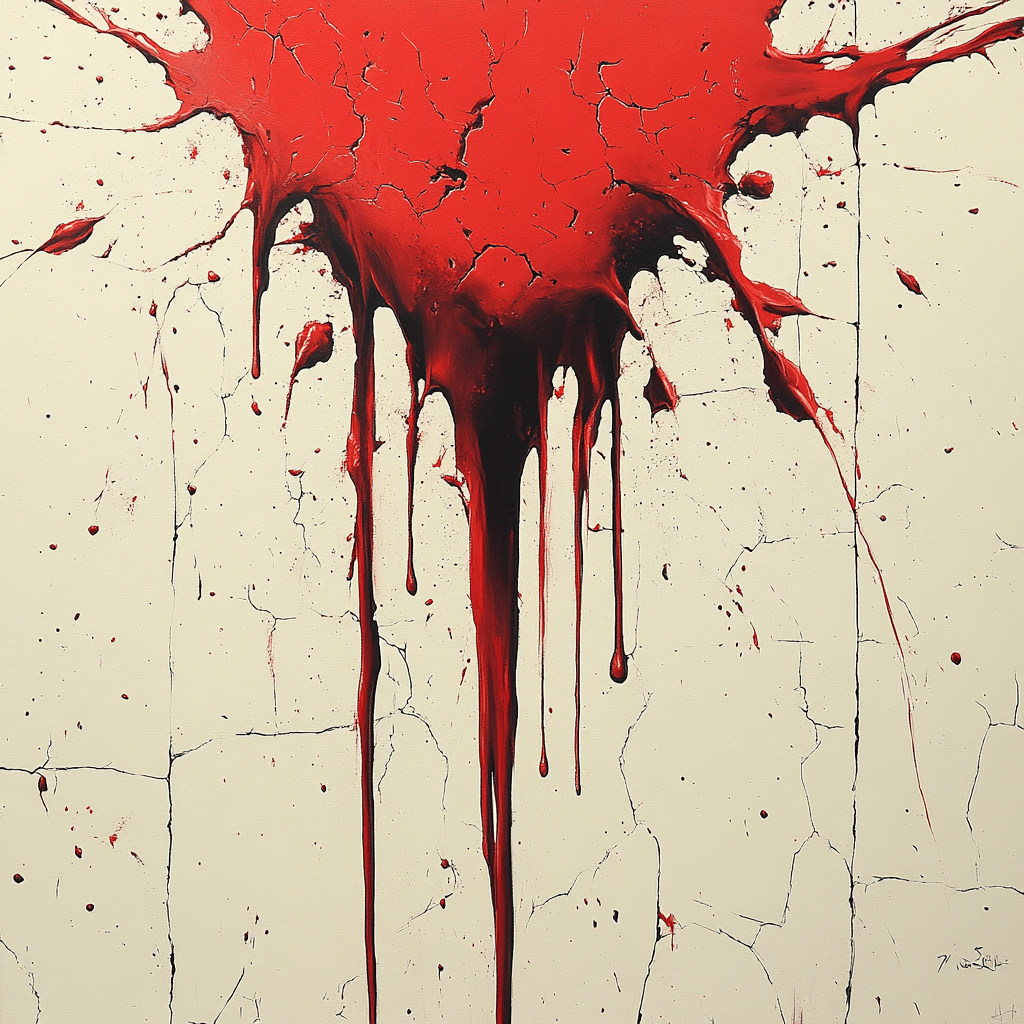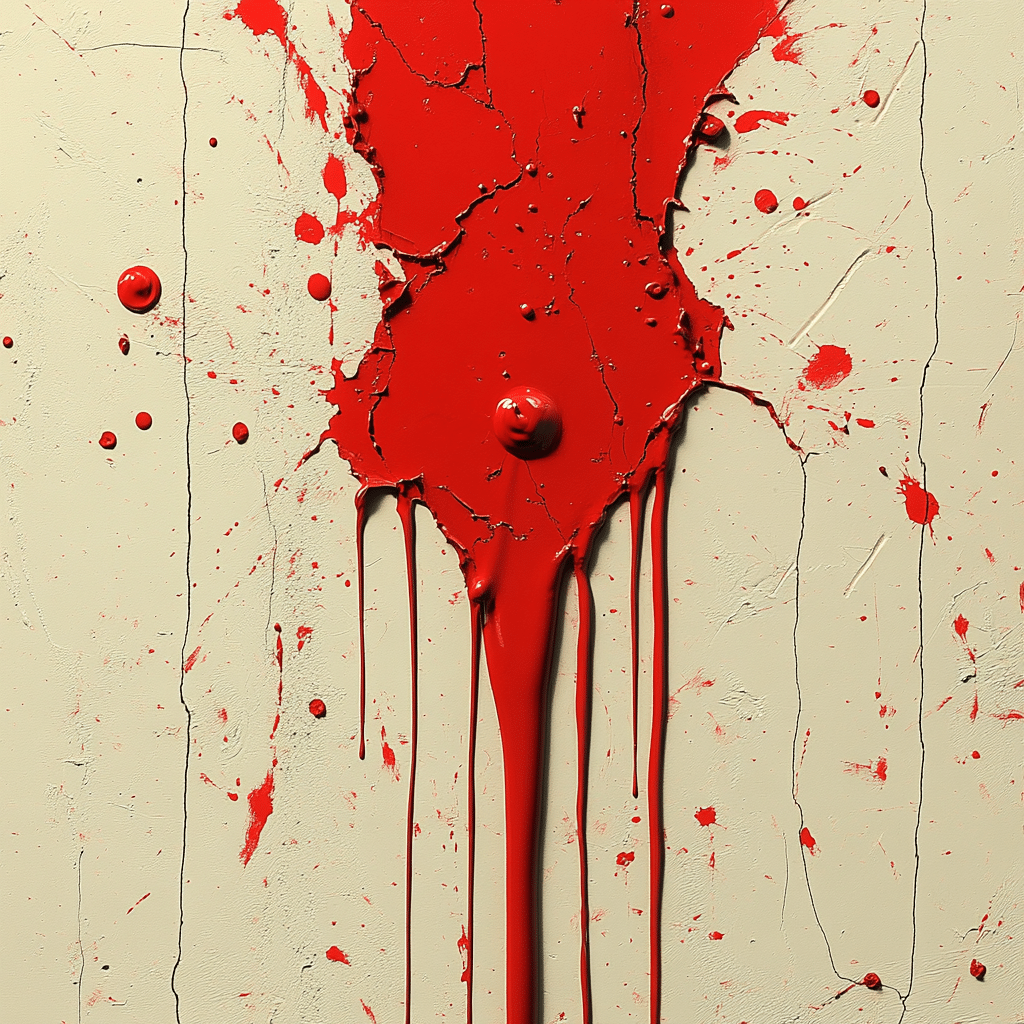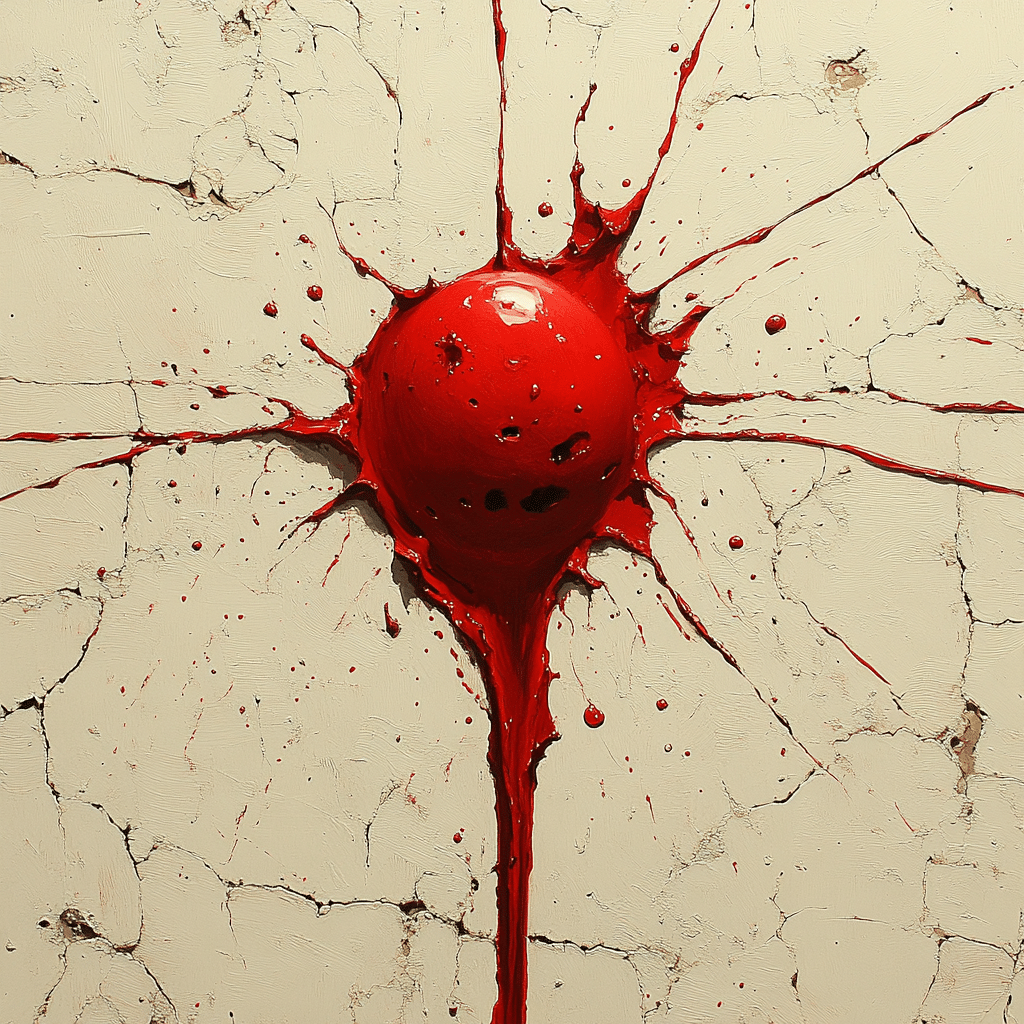Blood splatter in film and television isn’t just about gore; it’s an art form that hides a ton of fascinating techniques behind it. Whether you’re watching a horror movie that makes you jump out of your seat or a clever comedy that gives you a hearty laugh, blood splatter effects are key to storytelling. So, buckle up as we explore seven perplexing techniques that make this cinematic magic happen and reveal how blood splatter can shape your movie-watching experience.
Top 7 Blood Splatter Techniques That Will Shock You
In the realm of flicks and streaming series, blood splatter effects work overtime to sell the story. Here’s a look at seven jaw-dropping techniques that filmmakers use to deliver those unforgettable moments.

1. The Ketchup Method: A Catchy Comedy Classic
Who said blood splatter couldn’t be funny? Ketchup sometimes doubles as stand-in blood for comedy. A classic example pops up in “I Love Lucy,” where Lucy’s mishaps with ketchup not just shocked but also elicited gales of laughter. This quirky technique showcases how a splash of red can surprise and amuse, reinforcing that laughter often walks hand-in-hand with shock.
But it’s not just Lucy; think of goofy flicks like “Shaun of the Dead,” where absurd situations get a bloody twist. These moments blend a comedic knockout punch with gore, driving home the fact that blood can be playful, too.
2. The Squib Effect: Realistic Drama
When it comes to serious narratives, nothing hits harder than the squib effect. A squib is a small explosive filled with fake blood, attached to clothing to give the illusion of a gunshot wound. Remember the chaos in “The Dark Knight”? Every blast of blood during the action sequences pushed that visceral punch home, deeply engaging the audience.
Directors use squibs to create tension as they deliver moments of intense emotional responses. This technique pushes boundaries, transforming simple scenes into high-stakes drama, and showing how impactful blood splatter can truly be.
3. Faux Blood Recipes: Crafting the Perfect Mixture
Many filmmakers whip up their own fake blood concoctions to achieve that perfect shade of red. A common recipe combines corn syrup, food coloring, and sometimes cocoa powder to add richness. Classics like “The Evil Dead” executed these recipes brilliantly; the sticky, glossy blood gives viewers exactly the grotesque experience they crave.
Making your own blood isn’t just fun; it’s also a cost-effective way to keep the production rolling. These recipes embody the essence of creativity in cinema, proving that sometimes the best moments are the fruits of resourcefulness.
4. Digital Effects: The Future of Blood Splatter
In today’s film landscape, digital blood splatter effects are on the rise. CGI allows filmmakers to create incredibly tailored blood spurts that fit perfectly within any scene’s tone. “Deadpool” is a prime example here; its exaggerated splatter adds a wild charm that aligns brilliantly with its irreverent style.
These tools allow creators flexibility and efficiency in achieving the effect they want. As technology continues to evolve, we can expect even more jaw-dropping uses of blood splatter that push the visual boundaries of storytelling.
5. Practical Effects: The Power of Realism
Many directors hold onto practical effects because they deliver authenticity. Take Quentin Tarantino’s “Kill Bill”; the use of real blood squibs contributes to the film’s raw sense of violence. The gore feels palpable, enveloping viewers in a world where they can almost taste the fear.
Practical effects invite audiences to experience the visual horror in a different light. This hands-on approach amplifies the shock factor and showcases how blood splatter can enhance the film’s overall emotional impact.
6. Smoke Detector Beeping: Heightened Tension
When tension builds, the sound of a smoke detector beeping can elevate the atmosphere even further. Its ominous beeping can draw viewers in, creating a perfect storm for blood splatter moments. Consider the psychological manipulation seen in “Psycho,” where every sound compounds the viewer’s unease.
Blending auditory elements with visual effects creates a multi-sensory experience. This blend of sound and sight ensures that blood splatter leads to heightened anxiety, hooking viewers deeper into the story.
7. Symbolism in Blood Splatter: Deeper Meaning
Firmly rooted in storytelling, blood splatter often symbolizes deep-seated themes. One rich example comes from “The Shining,” where the iconic blood elevator scene looms large with meaning. It encapsulates the hotel’s haunted past and the lingering trauma affecting its characters.
Filmmakers use these visual cues to infuse characters and plots with weight. The way blood splatter weaves into the narrative allows for a more profound connection with the audience’s emotional journey.

Exploring the Effect of Blood Splatter on the Audience’s Perception
The impact of blood splatter transcends mere aesthetics; it elicits emotional and psychological responses from viewers. A comedic moment can shift to horror with a single splatter, captivating our interest and stirring our feelings. Through analysis, we see that these effects provoke everything from laughter to disgust, enhancing the overarching cinematic narrative.
As streaming platforms burgeon with assorted genres, filmmakers are more inventive with blood splatter techniques than ever. Their creativity keeps us captivated, and audiences find themselves on a rollercoaster of emotions from scene to scene. Beyond shock value, blood splatter serves as a key storytelling device, connecting us to the characters’ journeys.
As we march into the future of cinema, who knows what other chilling secrets await us? With innovations in effects and narratives, blood splatter is here to stay, urging us to rethink how we view film and its multifaceted messages. Watching these secrets unfold only adds to the thrill of being a true cinema lover.
So next time you’re engrossed in your favorite blockbuster, take a moment to appreciate the craftsmanship behind those unforgettable scenes—the blood splatter speaks volumes in every frame!
Blood Splatter Secrets That Will Shock You
The Art and Science of Blood Splatter Analysis
Did you know that blood splatter patterns can tell a vivid story about a crime scene? Blood splatter is a fascinating intersection of science and sleuthing. The angles, sizes, and distances of droplets can reveal the position of the victim and the assailant during an incident. This technique has roots tracing back to the infamous Murder of the Black Dahlia, where investigators meticulously analyzed blood splatters to reconstruct events. Just like the nose of a good detective in a classic Dub Taylor flick, blood splatter analysis draws intriguing lines between art and science.
Speaking of style, blood splatter may remind you of some creative uses of color and urgency seen in Maggie Q Movies And TV Shows. Her roles often depict intense moments that leave audiences at the edge of their seats. To further spice things up, it’s worth mentioning how filmmakers employ techniques in blood splatter to evoke intense emotional reactions. Kind of like how Inside Out tackled emotions such as sadness and joy, creators can use blood splatters to trigger visceral feelings in their audience.
Cultural References in Blood Splatter
Blood splatter isn’t just a technical tool; it has slipped into pop culture too! Take for instance the striking artwork of Bold And Brash, which evokes feelings of chaos and creativity. Similarly, blood splatter in movies plays a crucial role beyond mere shock value. It can symbolize a character’s internal struggles, akin to Books about addiction that delve into the consequences of choices. Additionally, the transition from a clear narrative to scenes drenched in blood perfectly mirrors the emotional turmoil often displayed in Michaela Jaé Rodriguezs performances.
Even on a different note, the glamour of Hollywood sometimes wades through the murky waters of blood splatter. Marilyn Monroe’s dramatic flair stands in stark contrast to the grim realities of violence depicted in films. While her iconic dress exudes classic elegance, the jarring imagery of blood in certain cinematic moments reminds us of life’s fragility. This duality adds an extra layer to how blood splatter influences storytelling, making for dialogues that can both captivate and disturb.
Behind the Scenes: The Practical Aspects of Blood Splatter
When you think of skilled professionals in blood splatter analysis, it might be easy to overlook the hard work that goes into this scientific field. Much like how fans keep up with Nyomi Banxxx and her boundary-pushing projects, blood splatter experts are professionals who continuously hone their skills and adapt to new findings. It’s a fascinating job that requires both creativity and analytical prowess, with many investigators even writing The Watchers reviews to share their insights into the process.
At the end of the day, blood splatter serves to elevate not only crime dramas but also the darker themes that pervade our understanding of human nature. So, as you watch those gripping scenes unfold, remember the secrets that lie behind those droplets—where each splash tells a story waiting to be deciphered!





